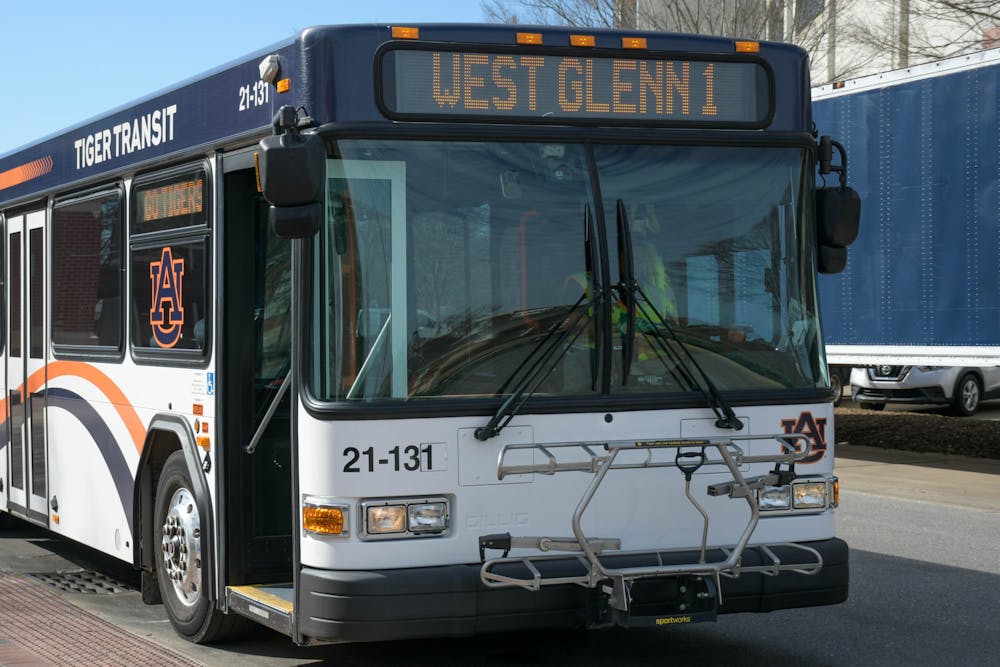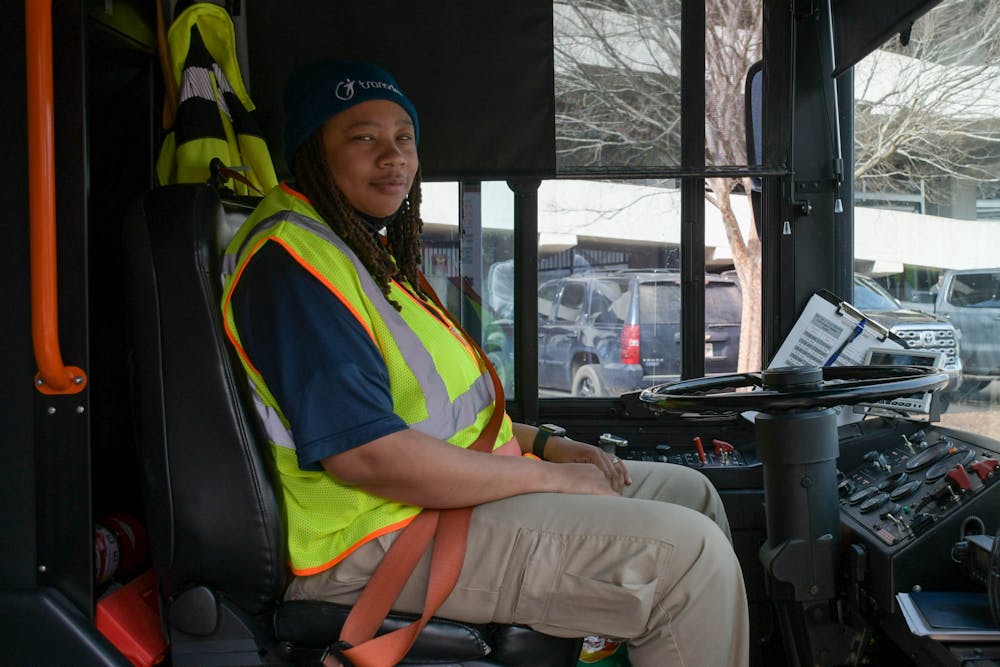Although the transit employees work tirelessly on the same routes and see familiar faces aboard their buses, many students don’t know much about their drivers. Without the quiet community of drivers, many students and Auburn staff would not get to campus or important destinations like grocery stores and medical clinics.
Known as Tiger Transit, drivers hired through First Transit drive 35-foot hybrid electric and diesel buses from 7 a.m. to 8 p.m. Monday through Friday to connect students, faculty and staff to campus.
With 22 routes, Tiger Transit has over 130 stops across Auburn. Besides stops at apartments and campus locations, Tiger Transit picks up and drops off students at notable places like city hall, the post office, Gogue Performing Arts Center and Jule Collins Smith Museum of Art.
For Lisa Young, 50, working for Tiger Transit allows her to relate to her time in college. Young is a newer driver for Tiger Transit, starting this past December. Since moving from Atlanta, Young explained her favorite aspect of the route is the ease of traffic compared to Atlanta.
Originally from Kansas City, Missouri, Young drove for transit companies since her kids were little. Young has had her transit license since 2004 and drives on the Webster Road route.

Tiger Transit awaiting students outside of the Melton Student Center on February 22, 2024.
On her route, Young finds the students she transports and the organization of Tiger Transit’s system enjoyable. Because her route transports students to and from places like the School of Veterinary Medicine, Greene Hall and the Large Animal Teaching Hospital, Young described her typical day as consistent and busy.
James Davis, 68, drives the Haley West route and has been driving for Tiger Transit since 2017. He originally started as a fueler for the buses but later decided to drive routes for students.
Tiger Transit only transports students, faculty and staff with valid Tiger IDs, and the general public is only allowed to use the transit during game days. In January 2023, Auburn launched the SPOT app in collaboration with ETA Transit. The app allows users to find the route that picks up at their location and shows, in real-time, the buses in route.
In addition to the app, ETA Transit updated the buses to have an LED light system that announces upcoming stops and voice-automated announcements, helping make the transit system more ADA-compliant.
Among all the drivers surveyed, most agreed that the most important thing to them was student safety. Many expressed concern about students not following transit protocol that requires students to refrain from walking in front of the bus after exiting.
Inside the buses, white lines marked behind the drivers and beside the two exits show students where to stand safely when no more seats are available. The buses are also equipped with cameras, emergency exits and pulls students can use to indicate they need the bus to stop.
In the evening and early morning, Tiger Transit doesn’t run. However, Auburn University provides a night security shuttle from 6 p.m. to 7 a.m. that transports students to on-campus locations. The shuttles have a van number and a blinking light on top to indicate it’s an official vehicle of Auburn University.
Besides getting students and faculty to campus, transit drivers also assist in getting gameday attendees from their cars to football games, men’s basketball games and gymnastics meets. The buses run two to four hours before tipoff and are free of charge for all who board.
Public transportation in cities is essential to connecting the city to the citizens. No public transport would cut off multiple demographics from safe and clean travel throughout cities.
In Auburn, the need for public transportation is no different. According to the Office of Institutional Research at Auburn University, over 33,000 students enrolled in the fall 2023 semester and 79% of the undergraduates lived off-campus. With the strains of on-campus living, outdated road systems and lack of parking, it would be impossible for all off-campus students to commute to classes safely.
Without the drivers of Tiger Transit, thousands of students would lose reliable transportation to multiple locations on campus, the AU medical clinic, grocery stores and the Auburn Mall. Students would risk walking far distances at night and be vulnerable to danger if the security shuttle was not in operation.
Transit drivers dedicate much of their time to Auburn University and its students. They work long hours, drive through crowded roads in Auburn and safely transport thousands of students while missing precious time with their families. The Tiger Transit drivers are vital in getting students involved on campus because many students would have no way of safely getting to campus without them.
Do you like this story? The Plainsman doesn't accept money from tuition or student fees, and we don't charge a subscription fee. But you can donate to support The Plainsman.
Michaela Yielding is a senior in journalism currently serving as the news editor. She has been with The Auburn Plainsman since fall 2023.





